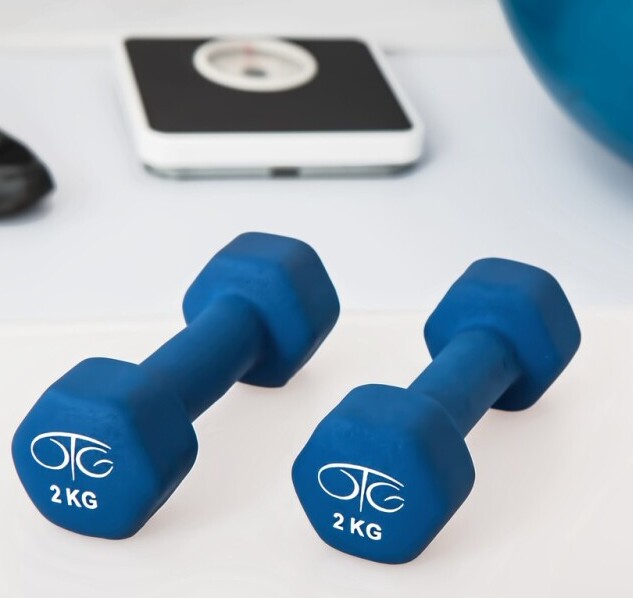
Strength training can feel like a boys’ club, but it’s not. Women have just as much to gain, and it’s about time we break those myths. It’s not just about getting bulky; it’s about building a stronger, healthier you.
Forget what you heard about bulking up. Strength training is your ticket to a leaner, stronger body. It boosts metabolism, improves bone density, and even helps with mental health. Imagine feeling stronger and more confident in your own skin. That’s what we’re here for.
Most importantly, strength training plays a crucial role in losing belly fat for women by increasing muscle mass, which boosts the resting metabolic rate and helps burn more calories even when at rest. This enhanced muscle mass also improves insulin sensitivity, aiding in better blood sugar regulation and reducing fat storage.
While spot reduction is not possible, strength training contributes to overall body fat loss, including in the abdominal area. Additionally, it provides an afterburn effect that continues to burn calories post-exercise and helps balance hormones that influence fat storage and appetite. Combined with a balanced diet and cardiovascular exercise, strength training is an effective strategy for reducing belly fat and improving overall body composition.
So, what’s the deal with strength training? It’s all about progressive overload, which is a fancy way of saying you gradually increase the weight or resistance you use. And don’t forget rest and recovery. Your muscles need time to heal so they can grow. Ignoring recovery is like trying to drive a car without refueling – it just doesn’t work.

Ever heard that lifting weights is risky? Let’s squash that right now. With the right form and technique, strength training is no more dangerous than any other exercise. And no, lifting doesn’t automatically mean you’ll turn into the Hulk. Women generally build muscle differently, focusing more on tone and strength rather than bulk.
Preparing for Your 12-Week Journey
First things first, let’s talk about assessing your current fitness level. Knowing where you’re starting from helps in setting realistic goals. Are you new to strength training or have you been dabbling for a while? It’s all good; the key is to be honest about your starting point.
Now, gear up! You don’t need a ton of fancy equipment to get started. A few pairs of dumbbells, a resistance band, and maybe a mat are enough to kick things off. Wear comfortable, sweat-wicking clothes and a good pair of shoes. Feeling ready can make a big difference.
Nutrition can make or break your program. Fuel your body with a balanced diet rich in protein, carbohydrates, and healthy fats. Think of food as your fuel – without it, you’ll sputter out. And don’t forget to stay hydrated, water is your best workout buddy!
Rest is just as important as the workout itself. Your muscles need time to repair and grow. Aim for 7-9 hours of sleep a night and listen to your body. If you’re sore or tired, it’s okay to take a break. Pushing through pain isn’t part of the plan.
Lastly, mental preparation is key. Set your mind on succeeding. Visualize your progress, stay positive, and remind yourself why you started. This journey is as much mental as it is physical. You’re building a stronger you in every sense.
The 12-Week Strength Training Program: Week-by-Week Breakdown
Weeks 1-4: – Building a foundation
At the start, it’s all about getting the basics right. Focus on mastering form and technique. Key exercises include squats, push-ups, lunges, and planks. Use lighter weights or even just your body weight. The goal is to create a strong foundation, which is crucial for avoiding injuries.
Weeks 5-8: – Increasing intensity
Now we’re turning up the heat. Start incorporating more weight. Add exercises like deadlifts, bench presses, and pull-ups. Increase your reps and sets, but keep the focus on form. This stage is all about challenging yourself without overdoing it.
Weeks 9-12: – Maximizing strength and performance
Time to push your limits. Mix in advanced movements and heavier weights. Compound exercises like squats with shoulder presses or deadlifts with rows can take your routine to the next level. Keep track of your progress and adjust as needed to keep things challenging.
Tracking progress is super important throughout. Take note of your sets, reps, and how much weight you’re lifting. Make adjustments based on your performance. If something feels too easy, it probably is. On the flip side, if you’re struggling too much, it could be a sign to scale back for a bit. The goal is steady, sustainable progress.
Staying Motivated and Overcoming Obstacles
Keeping the motivation up isn’t always easy, but it’s totally doable. Start with setting short-term goals and celebrating small victories. Even tiny wins like lifting five more pounds or adding one more rep can help you stay pumped.
Common challenges will pop up, and that’s part of the journey. If you’re short on time, try to fit quick workouts into your day. Dealing with plateaus? Mix up your routine with new exercises or different intensity levels. Soreness is part of getting stronger, but listen to your body. Stretching and proper cool-downs can help with that.
 Support systems can make a huge difference. Workout buddies are awesome for staying on track, but even online communities can provide that much-needed encouragement. Share your progress, ask questions, and find inspiration from others.
Support systems can make a huge difference. Workout buddies are awesome for staying on track, but even online communities can provide that much-needed encouragement. Share your progress, ask questions, and find inspiration from others.
Remember to give yourself props for the effort you’re putting in. Milestones aren’t just about big achievements; they’re about the journey. Reward yourself with a treat or a day off when you hit a goal. Staying motivated is about keeping the experience positive and rewarding.
Life After the Program: Maintaining and Building on Your Gains
The structured program is done, but your journey isn’t. Transitioning to a sustainable fitness routine is key. Keep the momentum going by continuing to include strength training in your weekly schedule. Consistency will help you maintain those hard-earned gains.
Setting new fitness goals can keep things exciting. Maybe you want to run a 5k, learn a new sport, or master advanced weightlifting techniques. Having something new to strive for helps keep motivation high and prevents boredom.
Long-term benefits of maintaining a strength training routine are huge. Stronger muscles, better bone density, improved mental health, and increased confidence are just the tip of the iceberg. Plus, sticking with it can help you stay injury-free in daily life.
Sharing your journey can be really inspiring to others. Whether it’s with friends, family, or a wider audience online, your progress and experiences can motivate more women to take up strength training. Be proud of what you’ve achieved and let your story be a beacon for others.

Hi
Thanks for sharing the informative article.
Strength training is often thought to be for men, but women can gain just as much from it. Instead of making women bulky, it helps them build lean muscle, speed up metabolism, strengthen bones, and improve mental health. It’s also great for reducing belly fat because more muscle means burning more calories even when resting. A good 12-week program can steadily build strength and improve overall fitness. Besides physical benefits, it boosts confidence and mental toughness. Overall, strength training is empowering for women, breaking stereotypes, and helping them take charge of their health and fitness.
Keep up the good work!
Regards
Saba
Absolutely Saba, you’ve nailed it! Strength training is indeed incredibly beneficial for women in various ways. It’s great for building lean muscle, enhancing metabolism, and even improving bone density and mental health. A solid strength training program not only helps with physical fitness but also empowers women to break stereotypes and take control of their health. Keep championing these important points!